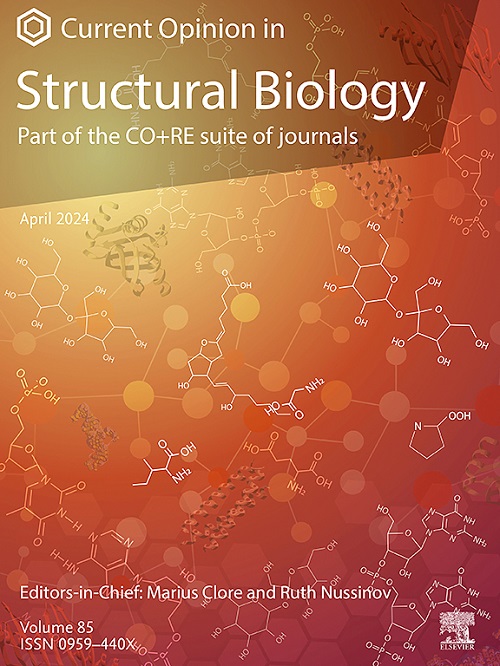组蛋白伴侣在复制偶联染色质组装中的结构和功能
IF 6.1
2区 生物学
Q1 BIOCHEMISTRY & MOLECULAR BIOLOGY
引用次数: 0
摘要
真核细胞分裂通过染色质的复制将遗传和表观遗传信息从亲代细胞传递给子代细胞,染色质需要在DNA复制后重建,因为它的构建块核小体被DNA复制叉的通过破坏。这种复制偶联(RC)核小体组装过程以不同的途径进行,这取决于是否使用新合成的组蛋白或亲本组蛋白。本文综述了近年来在RC核小体组装的结构和生化研究方面的最新进展,重点介绍了组蛋白伴侣蛋白在新合成组蛋白核小体的重新组装和亲本组蛋白的再循环中的作用。我们还讨论了组蛋白伴侣和控制核小体组装与染色质复制耦合的复制体组分之间的相互作用。最后,我们对未来推进这一重要研究方向的努力提出了展望。本文章由计算机程序翻译,如有差异,请以英文原文为准。
Structure and function of histone chaperones in replication-coupled chromatin assembly
Eukaryotic cell divisions pass on genetic and epigenetic information from parental to daughter cells through replication of the chromatin, which needs to be reestablished following DNA replication, as its building block, the nucleosome, is disrupted by the passage of the DNA replication fork. This replication-coupled (RC) nucleosome assembly process takes place in distinct pathways depending on whether newly synthesized or parental histones are used. This review highlights recent progress in structural and biochemical studies of RC nucleosome assembly, focusing on the roles of histone chaperones in both de novo assembly of nucleosomes from newly synthesized histones and the recycling of parental histones. We also discuss the interactions between histone chaperones and replisome components that govern the coupling of nucleosome assembly to chromatin replication. Finally, we offer our perspective on future efforts in advancing this important research direction.
求助全文
通过发布文献求助,成功后即可免费获取论文全文。
去求助
来源期刊

Current opinion in structural biology
生物-生化与分子生物学
CiteScore
12.20
自引率
2.90%
发文量
179
审稿时长
6-12 weeks
期刊介绍:
Current Opinion in Structural Biology (COSB) aims to stimulate scientifically grounded, interdisciplinary, multi-scale debate and exchange of ideas. It contains polished, concise and timely reviews and opinions, with particular emphasis on those articles published in the past two years. In addition to describing recent trends, the authors are encouraged to give their subjective opinion of the topics discussed.
In COSB, we help the reader by providing in a systematic manner:
1. The views of experts on current advances in their field in a clear and readable form.
2. Evaluations of the most interesting papers, annotated by experts, from the great wealth of original publications.
[...]
The subject of Structural Biology is divided into twelve themed sections, each of which is reviewed once a year. Each issue contains two sections, and the amount of space devoted to each section is related to its importance.
-Folding and Binding-
Nucleic acids and their protein complexes-
Macromolecular Machines-
Theory and Simulation-
Sequences and Topology-
New constructs and expression of proteins-
Membranes-
Engineering and Design-
Carbohydrate-protein interactions and glycosylation-
Biophysical and molecular biological methods-
Multi-protein assemblies in signalling-
Catalysis and Regulation
 求助内容:
求助内容: 应助结果提醒方式:
应助结果提醒方式:


